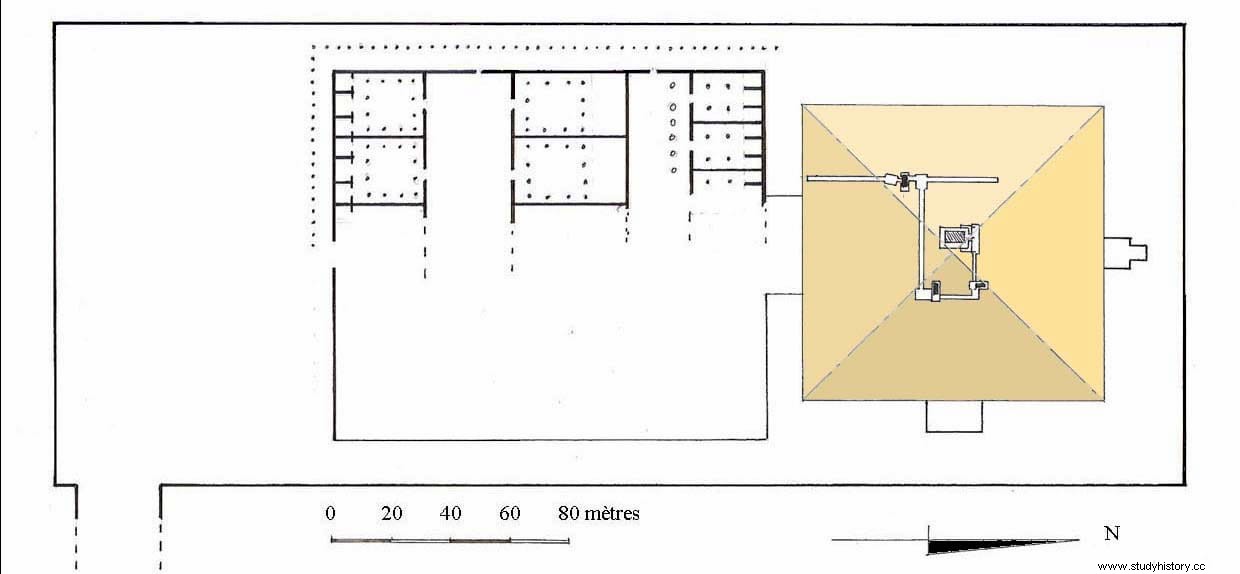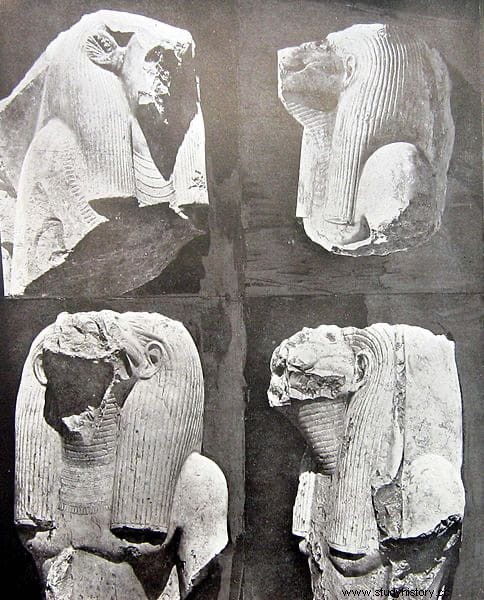In the 5th century BC the Greek historian Herodotus traveled to Egypt and visited the current region of El Fayum, located south of the Nile delta, about 100 kilometers southwest of Cairo. There he saw a large lake that the Egyptians called mer-uer and which he named Meris (present-day Lake Moeris).
Near the lake, in Hawara, he saw the pyramid of Amenemhat III (Pharaoh of the 12th dynasty), built in the 19th century BC. and whose funerary complex was the largest in the Middle Kingdom. And next to it a great labyrinth:

This labyrinth was an immense complex of interconnected buildings to the south of the pyramid, covering an area of about 70,000 square meters, and having a total of about 3,000 rooms distributed on two floors, one of them underground, around 12 patios.
When he visited it, he was only allowed to go through the upper level, since the Egyptians who guarded it did not allow him access to what they informed him were the burial vaults of the pharaohs who had built the labyrinth, and of the sacred crocodiles. Q> 
Possibly the enclosure was still used ceremonially, and this was the reason that Herodotus was prohibited from entering. Other ancient writers also mention the labyrinth. Strabo, who visited it in the 1st century BC. he describes it in a similar way, although he doesn't say anything about the underground chambers:

Pliny the Elder, who also speaks of the famous labyrinth, says that its architect was Petesuchos Pnepheros, whose name also appears in the dedication of a temple in the nearby town of Karanis (now Kom Oshim).
However, with the passage of time, the labyrinth and the complex that during Late Antiquity were considered among the wonders of the world, disappeared. They would have been used as a quarry since Roman times, and modern researchers began to wonder if they ever existed or were just exaggerations by ancient writers.

But in 1849 the expedition of the Prussian archaeologist Richard Lepsius found a series of structures, which he thought were part of the temple of Amenemhat III, but which were actually the remains of the famous labyrinth. In 1888, the Egyptologist Flinders Petrie began to excavate the site, to the great disappointment that the entire labyrinth was completely destroyed, and he was unable to recover any part of the complex.
In 1911 Petrie returned to Hawara and continued to excavate the labyrinth, in which he found many of the famous Fayum portraits on mummies from Roman times. He also found fragments of two colossal statues of the seated pharaoh Amenemhet III, of which only the pedestals remained. These huge pedestals are called the Colossi of Biahmu , because of the place where they appeared.

Petrie published a plan with a partial reconstruction of the Labyrinth, made up of 18 large chambers separated by three main corridors, two lateral ones and one central one. In total, it is believed that it must have been about 300 meters long by 244 meters wide, large enough to house the great temples of Karnark and Luxor.
Of this great complex identified as the labyrinth, today only a few ruins and fragments of granite columns, some walls and their foundations, door jambs, and parts of statues remain. However, not all researchers agree. Some, like Montet or von Däniken, believe that the real labyrinth is still hidden somewhere in the Hawara area, at the entrance to the channel of Lake Moeris.
